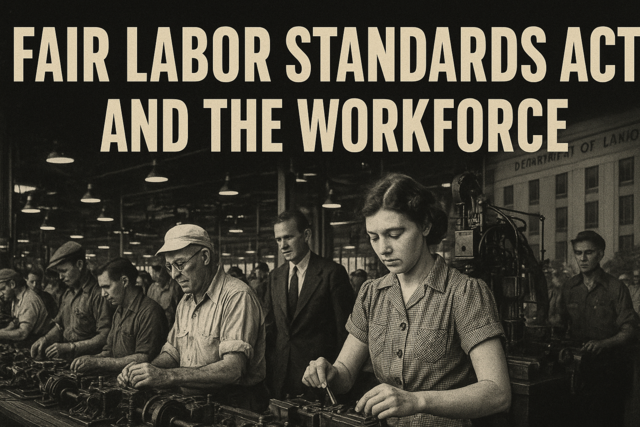One of the highly frustrating things to a job seeker is a job posting. While it might make perfect sense to the person who wrote it, it may not sound as though it is speaking to the applicant.
To ensure the best possible recruitment outcomes, it becomes essential for a company to understand how their job requirements need to align with their talent expectations.
In other words, companies need to make sure job postings speak (and speak accurately) to the person they want to hire.
Know the Job Requirements
Since it is typically a human resources generalist or some other HR staff member who writes the job postings, it is essential they have a strong grasp of the actual requirements.
If the person writing the posting does not have an accurate picture of what the applicant will be doing, then the posting may not speak to the right person.
To find out what the job requirements are:
- Talk to the person doing the job.
- Find out what the ideal job results will be.
- Review past resumes of those in the role or who have held the role.
- Consider to what jobs the person holding the role transitioned.
Remember, the job requirements are not only about what the person will be doing when they sit at their desk. You also need to list what they need to achieve on a daily basis or what they will be called upon to support.
For example, you might have a job posting for a person who will be overseeing the marketing for the company. Not only do they need to know how to create a marketing strategy, but also they need to know how to analyze the market so their strategy will be effective and timely.
In addition, make a list of the things no other person in the company might do besides them. This will make the position stand out from the rest.
Also, include what the environment will be like so the applicant knows whether this is suitable for them. For example, you do not want to describe a desk job and then suddenly have the person traveling every week.
Know the Expectations
Often overlooked in job postings is a summary of the expectations for the job. When a person reads the job posting, they should know what they are supposed to do and what their overall goal for the job is.
For example, the marketing person in the previous example might have the overall goal of increasing sales for the Widget 2000 within the North American market.
The more specific you can be about the larger expectation, the more the person applying can consider whether they are up for the challenge. In some cases, this expectation will weed out anyone that has no idea what this means or how they might approach.
However, for the person who already understands what you mean, they will instantly think about a potential plan for this goal, and they will determine ways in which they can accomplish their assignment.
Even if you are not sure what the person should be doing as their overall goal, consider what the company needs from this person in order to grow. Consider why the company needs to have this particular role in place, especially over the course of the next year, five years, and ten years.
The more you clarify the way in which this particular person can help, the more you attract the person who is interested in helping.
Look at Who is Responding
If you are not sure what you do with the job postings you have already set up and that have been disappointing, consider who has been applying. What are the things these people have on their resumes or in their experience that you do not want from a new employee?
Think about what the people who are applying seem to think the job is about, and then adjust your job posting accordingly.
You need to make sure that you are only attracting those people who have the skills that you want, and the experiences that will ensure that they are a success at your company.
Track the responses you get from your current job posting for a few weeks. Find out where the applicant found the posting, how they found it, and how they feel that they are a good fit.
Even a quick telephone interview about these questions can help you see what is not working for the job posting, and the applicant might see how they are not a good fit either.
Everyone wins when there is clarity.
Summary
The job posting is what speaks to the talent, and if the job posting is not clear about the requirements or the expectations, it may draw unwanted attention. By clarifying the job details and the expectations, you may have fewer resumes to review, but they will be resumes that are from people that you want to interview.
Why Retention Matters in any Economy
In the economic downturn, it became clear how companies might have had a problem with the way they look at their employees. Instead of thinking about how they could retain the talent they had, they often cut the most senior employees to save on payroll or pensions.
Nevertheless, retention strategies matter, no matter what is happening in the stock market or the economy. When companies start to look at how they can hold onto the people they have, they will benefit more than they think.
Of course recruiting new talent is necessary also, but retaining those who are valuable can be a way to ensure the new talent understands how they are expected to perform.
Reduced Costs
The retention of valuable employees saves companies money. With each employee that remains at a company, there are cost savings.
- Training. When you encourage staff members to stay in their jobs for long periods, this decreases the need for training. In addition, those same workers can take on training roles for new employees instead of requiring outsourced training staff.
- Resources. If the same employees are at a company, they can share their resources instead of requiring new resources. They have a collaborative spirit and they understand how to find what they need from clients or from the company. New staff members may take up time and energy looking for the resources that long term staff members already have available.
- Supplies. On a very practical level, when you do not hire new people, you do not have to lease or purchase new equipment or supplies for them.
- Recruiting. It costs money to recruit new talent, and if you already have the talent you need, you can cut this cost from your organizational development budget.
Clearly, the more people you can retain at a company, the easier it is on the company as a whole. You can continue to improve on what you already have and already know, instead of starting over.
Improved Services
Consider the people you have in your company right now. How well can they do their jobs? How well have they done their jobs in the past?
Assuming the people who are still working in the company are of high caliber, your customers and clients know they will receive a high level of service and support. They know that when they work with people who have been at the company for a while, the client can trust them to help and to provide them with the right assistance.
However, newer employees and those who are not invested in a long term career with a company may not be able or willing to provide a high level of service and support. They might simply want to get a paycheck and then leave.
Although this is certainly not the case for everyone that works at a company, it is something to consider when developing or considering a retention strategy.
Long term employees know:
- What clients need.
- Which clients are tricky and need special support.
- How to handle long term accounts.
- What questions to expect.
- How to answer complaints and concerns.
When you are working with people who already know what they are doing and how to manage their job expectations, they are able to provide a higher level of service, one that will ensure that the clients feel special.
A retained employee has probably worked with certain clients for years, so they are familiar with what the client needs, and the employee is invested in the client's satisfaction.
After working with the same people for long periods of time, it makes sense the employee would feel invested and would go beyond to make sure that the service levels were high.
Certainly, the right new recruit would get to that level of service, but it might not happen in a short periods.
Positive Reputation
The more stable a company is in terms of its employees, the more stable it will be in its ability to serve and support customers and clients. As a result, the reputation of the company grows.
Reputation matters in many areas, including revenue and overall market appeal. When the reputation of the company is positive, there are advantages to be had.
- Workers want to keep it up. When a company is seen as a force in their industry, they are seen as someone to beat. As a result, employees of those companies want to make sure their company continues to succeed. Workers work harder, speak well of where they work, and so forth.
- The company is better. If workers are more committed to making their company the best, then the company will become the best it can be. This might show up in revenue and in the overall productivity of the company.
- The appeal of the company is higher. To the outside world, a company with a strong foundation of long term employees is a company that is stable and appealing. Moreover, this appeal is what speaks to the talent that needs to be recruited. In addition, this appeal also speaks to customers who want to do business with a company that knows the value of their team.
The more you can see how retaining the same old staff will boost your overall success, the more you can see why new is not always better when it comes to your organizational development and human resources strategies.
Summary
How Recruitment and Retention Work Together
Like the age old debate of whether the chicken or the egg came first, many companies are torn between recruitment and retention. To some, activities that are in direct opposition, or they need to be considered one at a time, depending on the company's needs.
Moreover, the truth is that these two thoughts are true and valid. Sometimes, you need to recruit more than you want to retain, and sometimes you need to retain your staff more than you need to focus on recruitment.
Look at how these two activities can work together, especially during specific times in your company.
Why Recruit if you can Retain?
Look at your company right now to see what is your team composition. The more you can identify the employees of value, the more you can begin to see whether you need to use one strategy or another.
Let us think about what might happen if you already have a number of valuable employees who have been with the company for an extended period of time. They have done good work for you and they have shown that they are loyal.
At first, it does not look as though it makes sense to recruit anyone new. After all, if things are working well and customers are happy, you should not change a thing.
However, you need to consider the fact that you will not have these long term employees forever. They might leave (unless you have a strong retention strategy, of course) or they might retire.
What you may want to do is to have a few new recruits in the mix; helping to create a strong team of valuable employees so there is always some combination of talented newcomers and long time staff members.
The long term staff members will be able to guide the new staff, while the new staff will be able to learn more and add in their own ideas to keep the company fresh and energized.
Of course, retaining the employees should still be a focus, but only if these staff members are supporting the current direction of your company. Sometimes, the direction of a company might shift, and the long term employees may not fit in with the new vision.
Why Retain if You Can Recruit?
Many companies still ascribe to the idea that you can always bring in new talent, so there is no need to pay the higher salaries of long term employees. Nevertheless, as a company begins to grow or hopes to grow, they need to have people who have been around for this entire timeline.
The trick with having new faces and fresh talent in your company is the dreaded learning curve. When these people are not on the same page in terms of the company's mission or direction, it can take a while for things to settle into the proper flow.
Some clients and customers depend on stability and predictability, which can make an ever-changing employee base difficult to understand, and to appreciate.
This is not to say that all employees should be held onto forever or that people should expect to do the same thing from day one until they retire.
Instead, there needs to be an understanding of what it means to have a company that is filled with new people. Even the best talent can feel lost when they are not in a stable environment. As a result, they might decide to go elsewhere to work, as they want some sort of organization.
The key to recruiting well is to hire the best, of course, but also to hire when there are already systems that work well. In time, those systems can be improved, but for now, a newly recruited employee needs to know where to begin.
A Happy Balance
Your staff should have a happy mix of those who have been around for a certain period, while new staff members should be added from time to time, especially in busy periods of success. You need to have new people ready to help grow the business, and they need to be brought into a company whose systems are already working well.
In time, the systems can be updated and changed once the rhythm has been established. With the long term employees present, this also means the newer employees will get the benefit of their experience and knowledge.
There are no magic numbers as to how many retained and how many newly recruited people you should have in your company. However, a mix can provide you with a blend of stability as well as energy that ensures your company will continue to be a success.
Take inventory of the people who work for you and see how the numbers add up. If you find that you are hiring many new people, ask yourself why. If you find you are not hiring anyone, ask yourself why.
The ongoing evaluation of your team will guarantee you always have the people you need to succeed.
Summary
Some companies might choose retention strategies over recruitment strategies, but there is value in balancing the two. Bringing in new energy can be just as essential to success as keeping people onboard who know what they are doing.

























